Ear of Dionysius - an amazing cave with unique acoustics and a sad history (8 photos + 1 video)
The Cave of the Ear of Dionysius (in Italian the name sounds like Orecchio di Dionisio) is known for its unique acoustic characteristics. Here, any sounds, even those barely perceptible to the ear, are amplified so that they become perfectly audible in the upper part, at a height of about 22 meters from the ground through a hole located there. 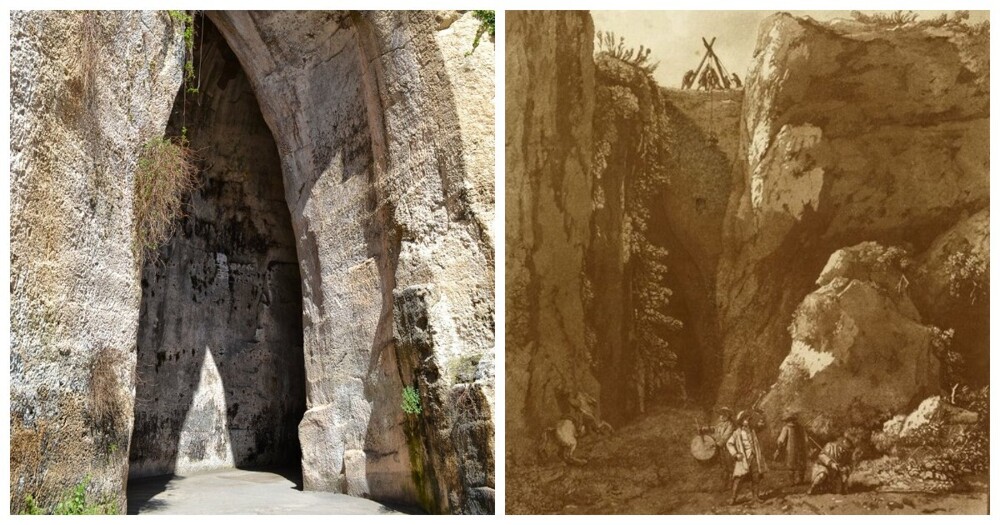
In 1829, journalist and geographer Konrad Malt-Brun noted: “Tearing a sheet of paper produces a noise similar to that heard when a heavy club hits a rock.” 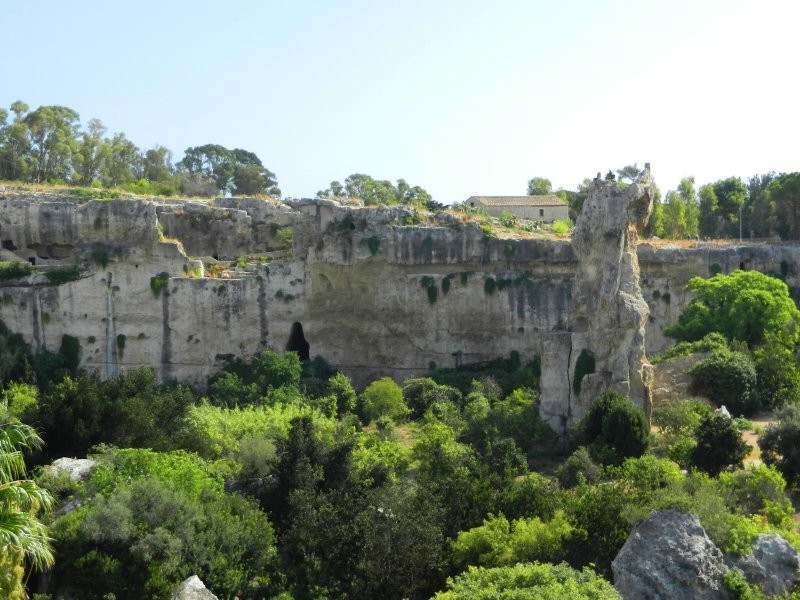
The cave, which has a narrow tunnel at the top that widens into a wider section at the bottom, is believed to have been carved out of an ancient limestone quarry. Some researchers theorize that the distinctive shape was the result of natural rather than man-made processes, and was preserved in its original form out of reverence for the strange acoustics, which were perceived by locals as a manifestation of divine origin. 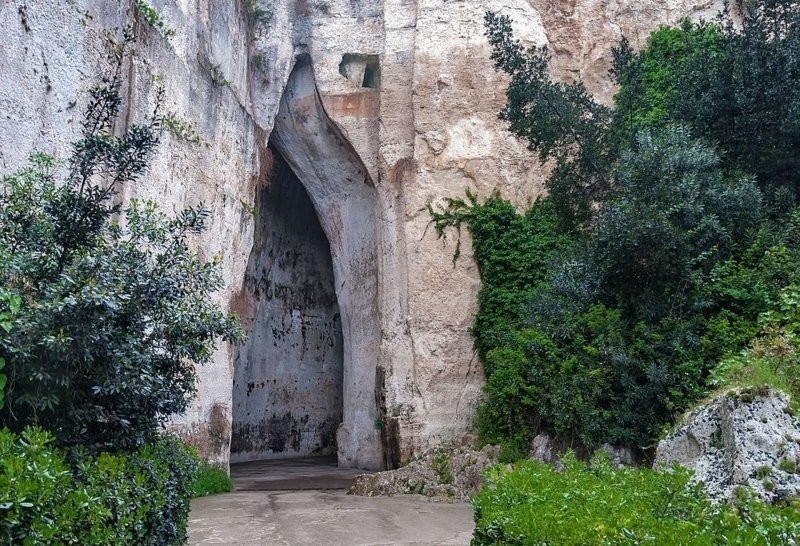
The name was given to it by the Italian artist Caravaggio in honor of the Greek tyrant Dionysius I, who ruled Syracuse from 432 to 367 BC. e. 
The painter visited this territory at the invitation of the historian and archaeologist Vincenzo Mirabella. In 1625, the writer Pietro della Valle also visited the Ear of Dionysius and was deeply struck by it. Around 1770, the French artist and architect Jean-Pierre Ouel arrived here and made a series of sketches. In his notes, he also mentioned the amazing acoustics of the grotto. Other celebrities have been here, including Dominique Vivant-Denon, a French writer, artist and diplomat, and the largest French short story writer and poet Guy de Maupassant. The latter described it as follows: 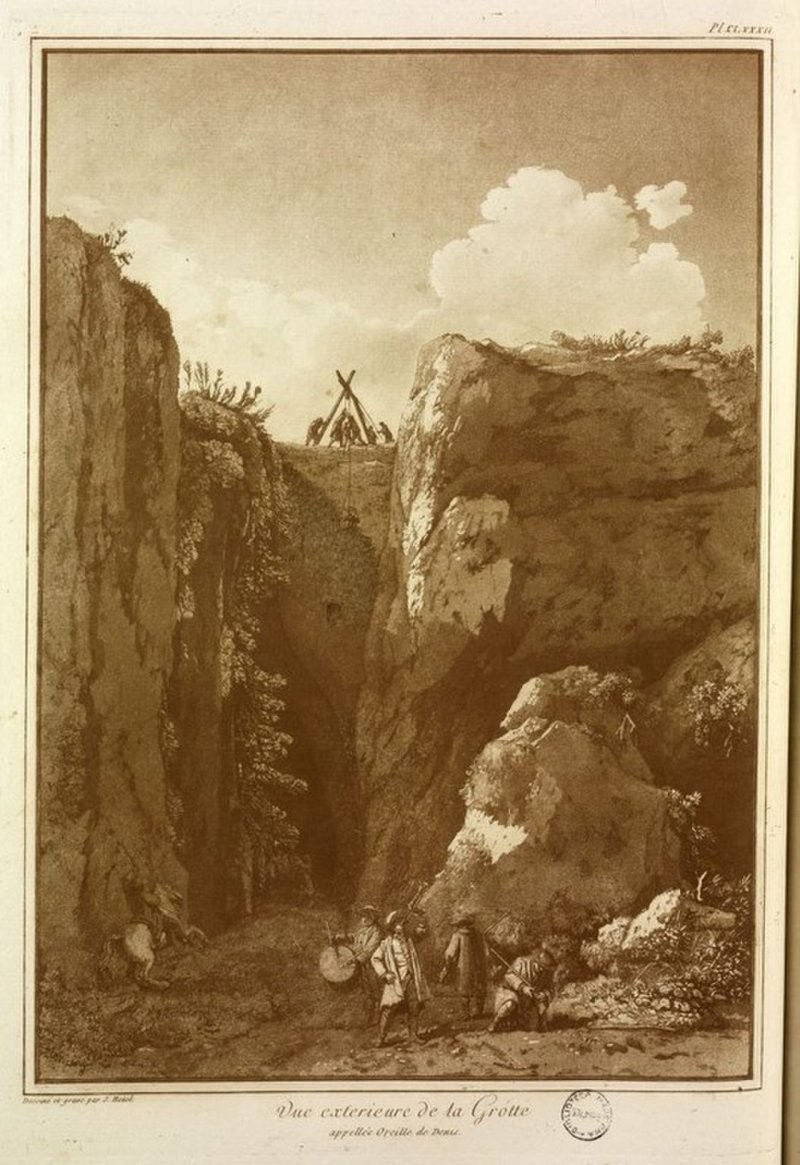
Ear of Dionysius in Huel's painting
... in Paradise Latomia, in the depths of the cave there is a strange hole called the ear of Dionysius, who, according to legend, came to the edge of this hole to listen to the groans of his victims. There are other versions. Some ingenious scientists believe that this cave, connected to the theater, served as an underground performance hall, because with its extraordinary resonance the slightest sound is amplified to incredible proportions. 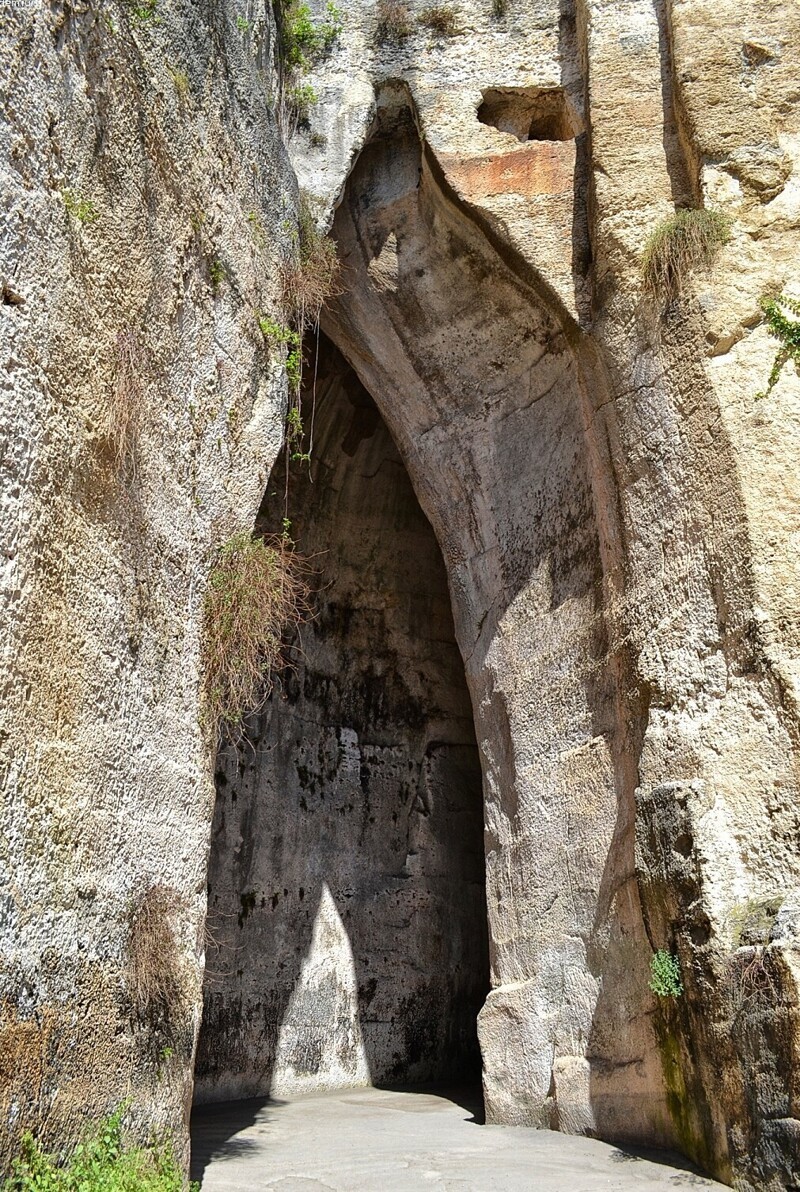
According to legend, Dionysius used the cave as a casemate, spying on his prisoners through a small opening at the top. So it was possible to clearly hear even a quiet whisper from below. Recent research, however, has found this myth to be implausible: although the amplification effect is really impressive, it does not explain the resonance that distorts even perfectly calibrated speech. 
Another, more terrible story says that the sadistic emperor, instead of listening to secrets, took pleasure in listening to the pained and despairing screams of his captives during torture. 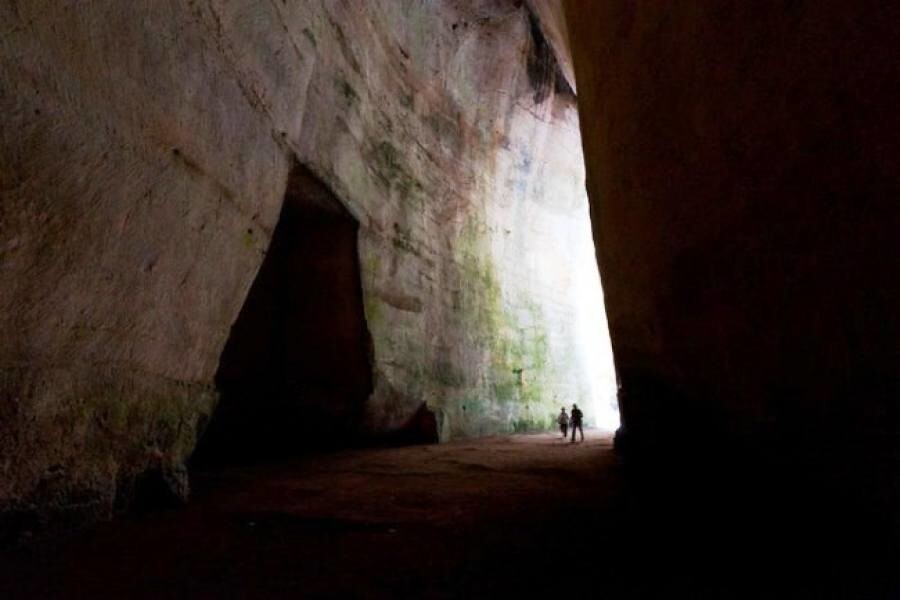
Visitors were once able to climb to the top via rope and pulley to enjoy and be impressed by the acoustics, but due to safety concerns this is no longer possible. And they have to make do with the fact that they can evaluate the effect below.






























